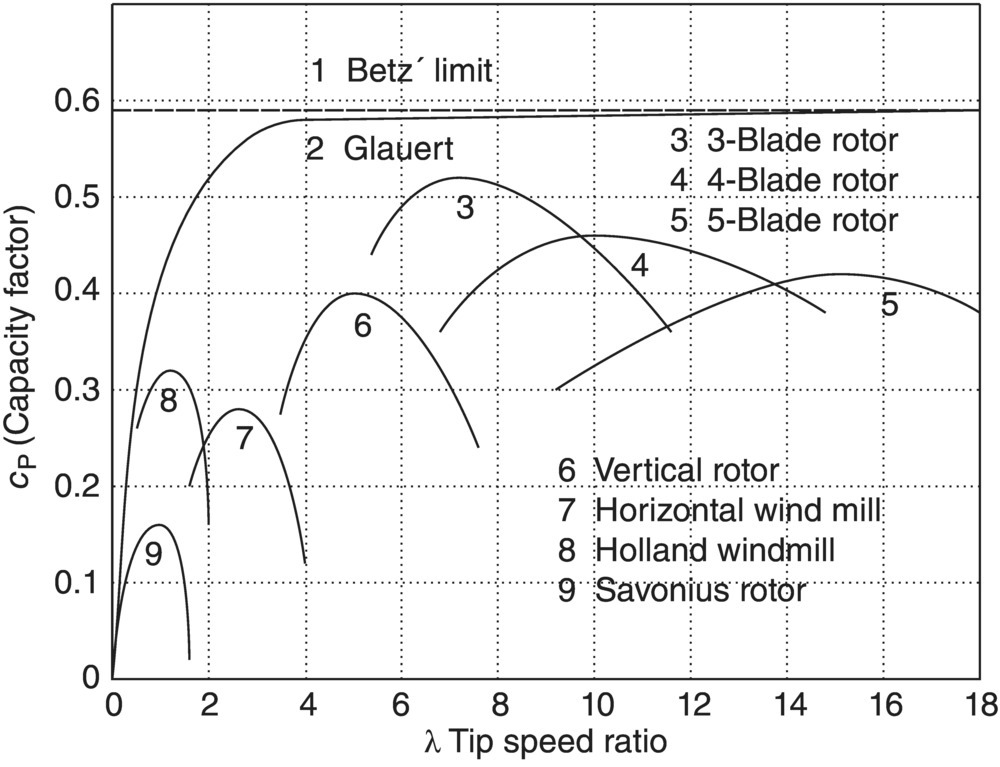4Aerodynamics and Blade Design
Alois Schaffarczyk
4.1 Summary
The basics of aerodynamics of wind turbines as a quantitative description of the flow around parts of or whole wind turbines or even wind farms are shown. As there is a comprehensive discussion of this field under preparation [1] and space here is limited, we will refer in many places to further studies of the original literature. For that reason an extensive discussion of computer-based methods (CFD) applied to wind turbine flow problems must also be omitted. The interested reader therefore should consult the final report [2] of the IEAwind Task 29, in which a comparison was undertaken by teams from 11 countries to meet the experimental wind tunnel results of Mexico (Model Experiments in Controlled Conditions) [3].
This chapter is divided into three parts: horizontal rotors, vertical rotors and wind-propelled vehicles. In a first overview, Figure 4.1 shows (without wind-propelled vehicles) that cp is a dimensionless (comparison) capacity and λ, the tip speed ratio, a dimensionless comparison number.

Figure 4.1 Map of the wind turbines
4.2 Horizontal Plants
4.2.1 General
For the mechanical design of wind turbines, it is necessary to refer back to theoretical models, which, in their simplest form, go back to the theories of Rankine [4] and Froude [5]. They were originally developed for ship and airplane propellers and then transferred ...
Get Understanding Wind Power Technology: Theory, Deployment and Optimisation now with the O’Reilly learning platform.
O’Reilly members experience books, live events, courses curated by job role, and more from O’Reilly and nearly 200 top publishers.

